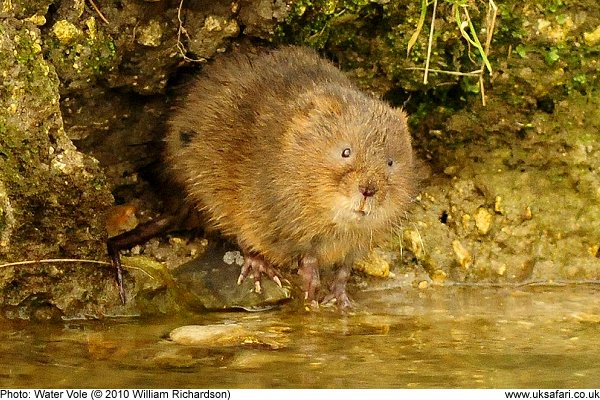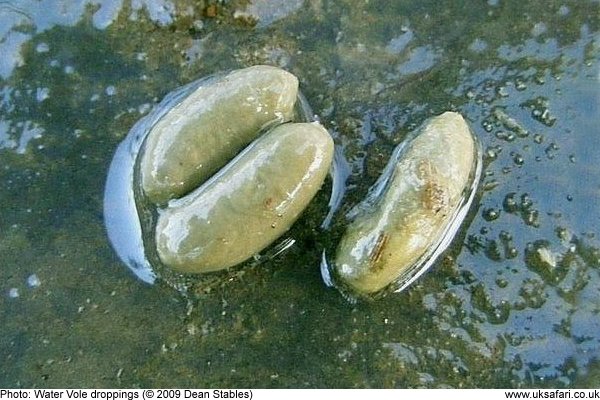 How to Find a Water Vole
How to Find a Water Vole
Water Voles Fact File > How to Find a Water Vole >

Finding a Water Vole can be tricky. Often the first (and last) indication you get is the loud "plop" sound they make as they hit the water and vanish into the distance. Once you know where water voles can be found, watching them can be surprisingly easy. Here are a few pointers to help you locate these shy and secretive mammals.
The water vole burrows are quite distinctive. They're normally beside ponds, lakes, or dug into the banks of slow running streams and rivers. They have an entrance hole of around 5 - 8cm in diameter.
The vegetation around the entrance hole is often nibbled to the ground, and there's frequently one well worn track leading away from the entrance hole. This often follows the edge of the water.

From spring through to autumn water voles leave their droppings piled up. Little heaps of up to 100 poops can be found at the water's edge. The poops are between 6 and 10mm long, and rounded at both ends. They're greenish in colour and you can sometimes notice the plant material they've been feeding on.
More info at: UK Safari Water Voles Fact File

 Popular Pages
Popular Pages
Amphibians, Bats, Badgers, Beetles, Birds, Birds of Prey, Bumble Bees, Butterflies, Caterpillars, Creepy-Crawlies, Deadly Spiders, Dolphins, Dragonflies, E-Postcards, False Widow Spiders, Free Newsletter, Frogs, Fungi, Garden Spiders, Glow-Worms, Grey Squirrels, Hedgehogs, House Spiders, Ladybirds, Mammals, Marine Mammals, Moths, Owls, Reptiles, Spiders, Toads, Trees, Wildlife Hospitals
Copyright © 2020 G. Bradley UK Safari. All rights reserved | About Us | Links | Contributors



 Related Pages
Related Pages
